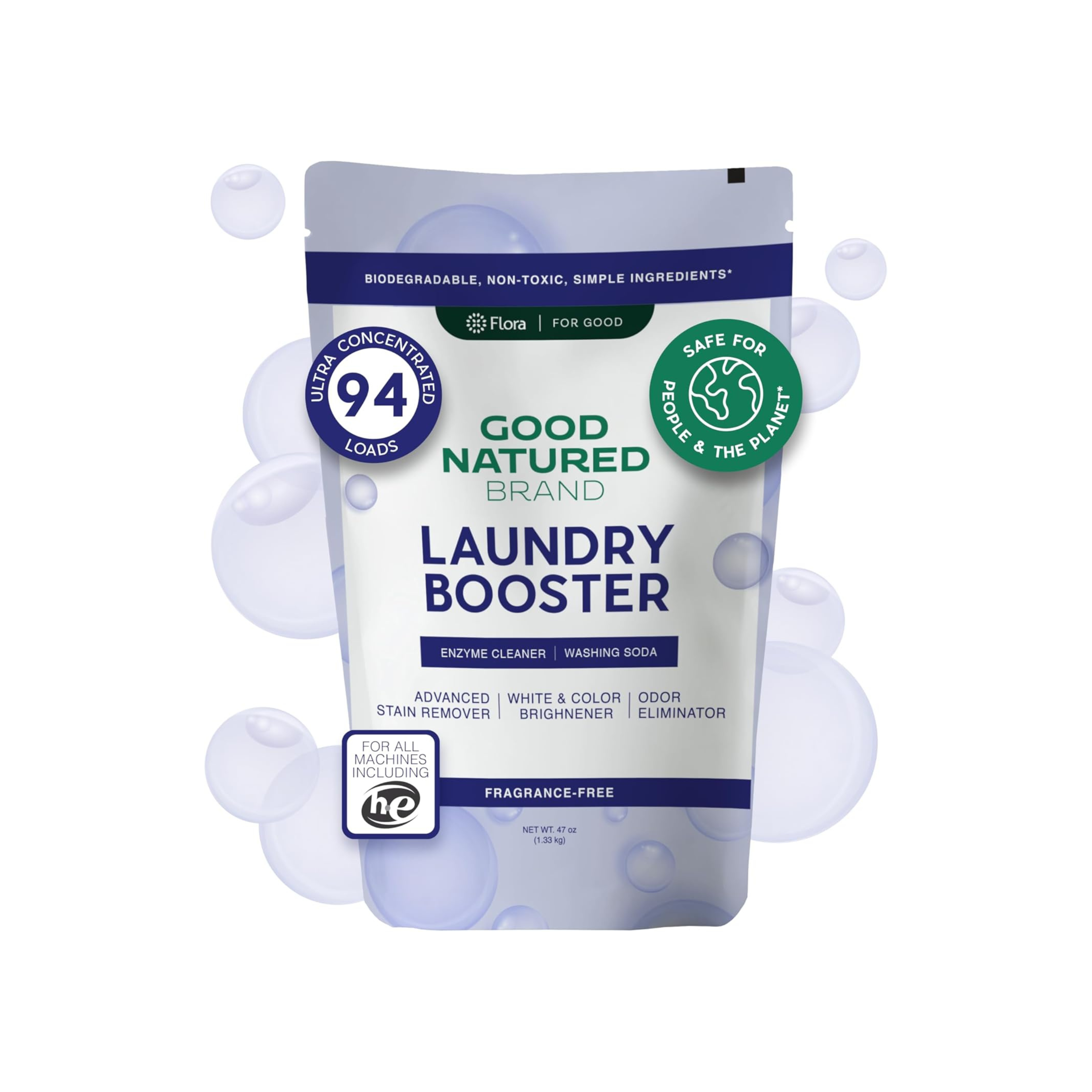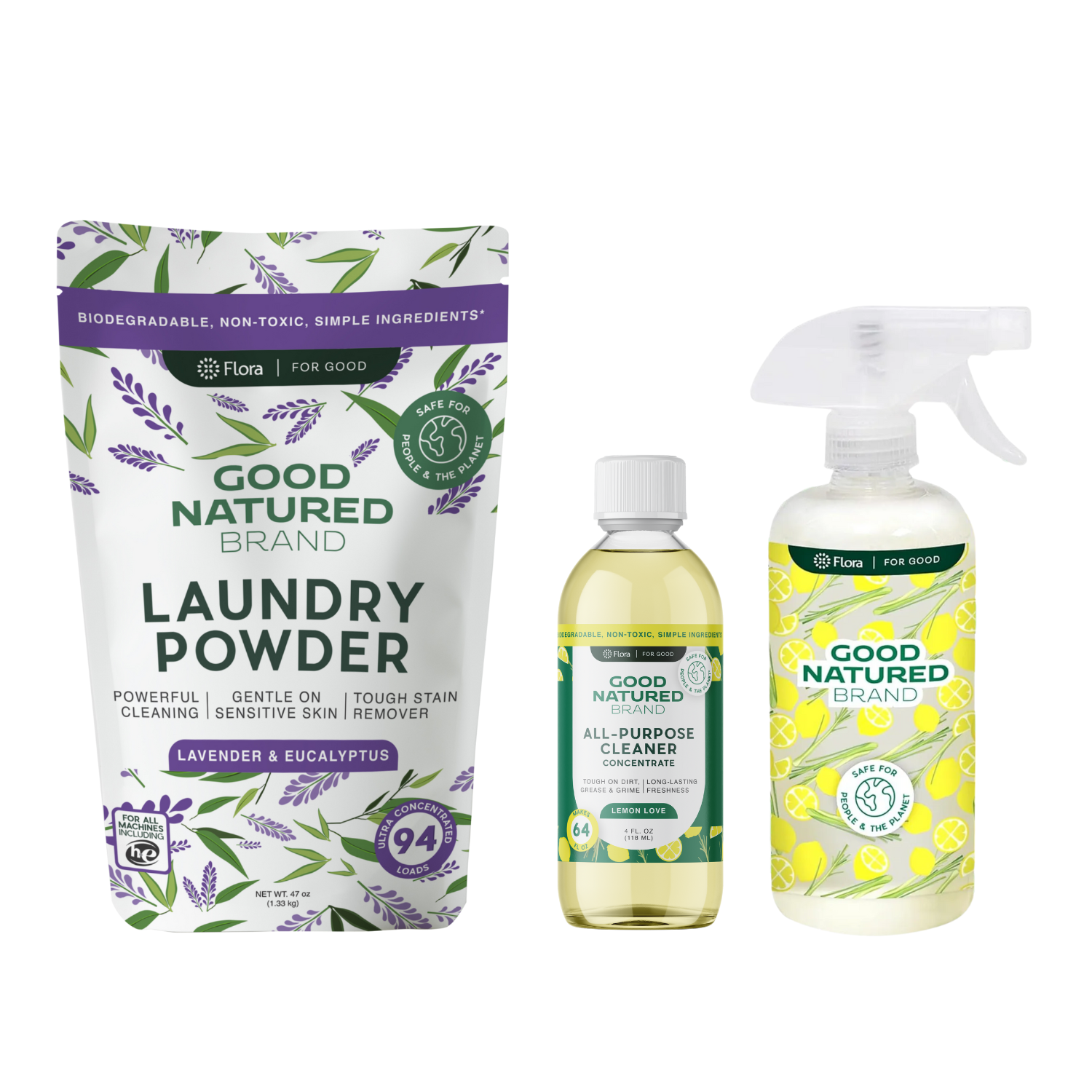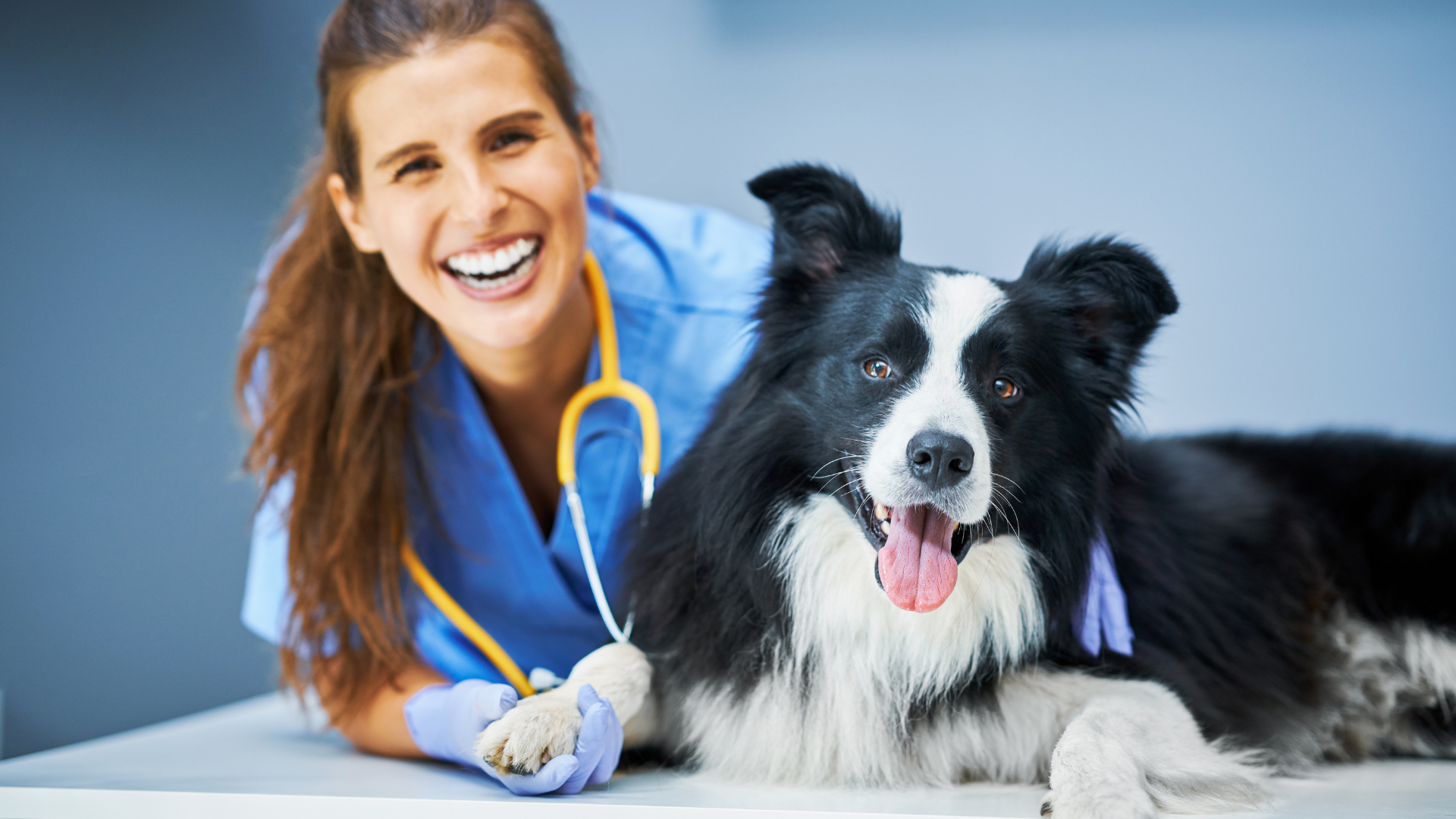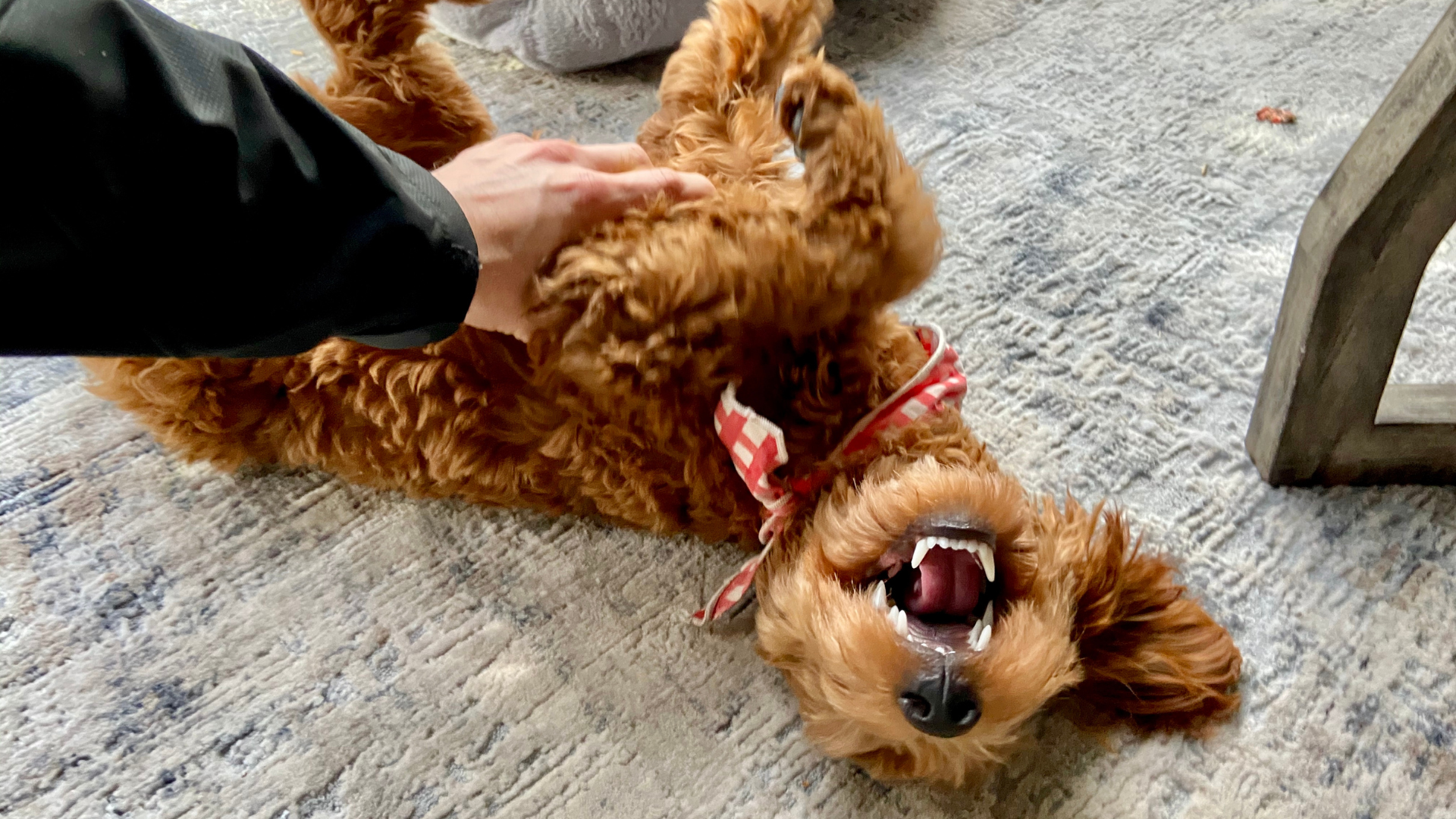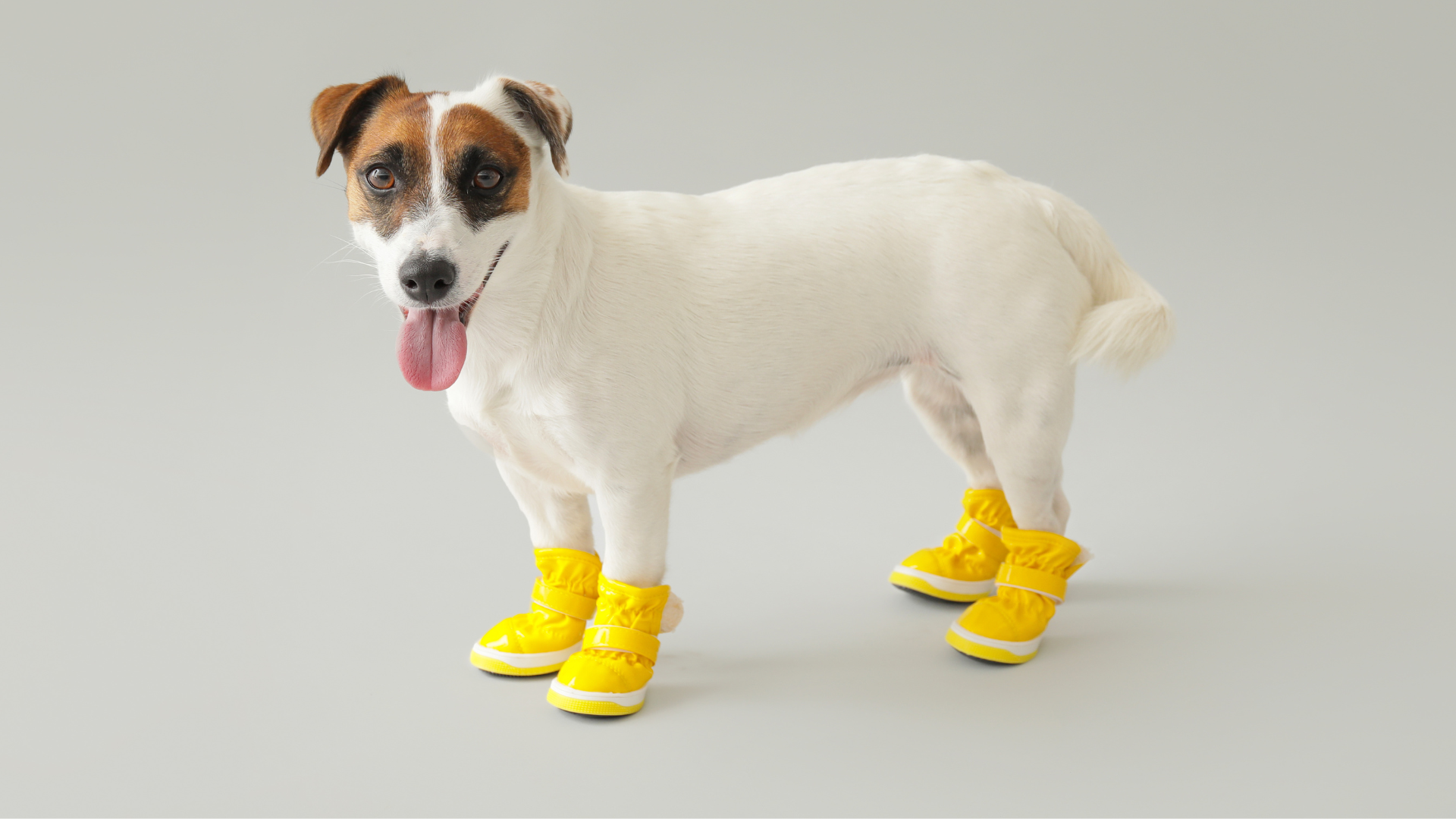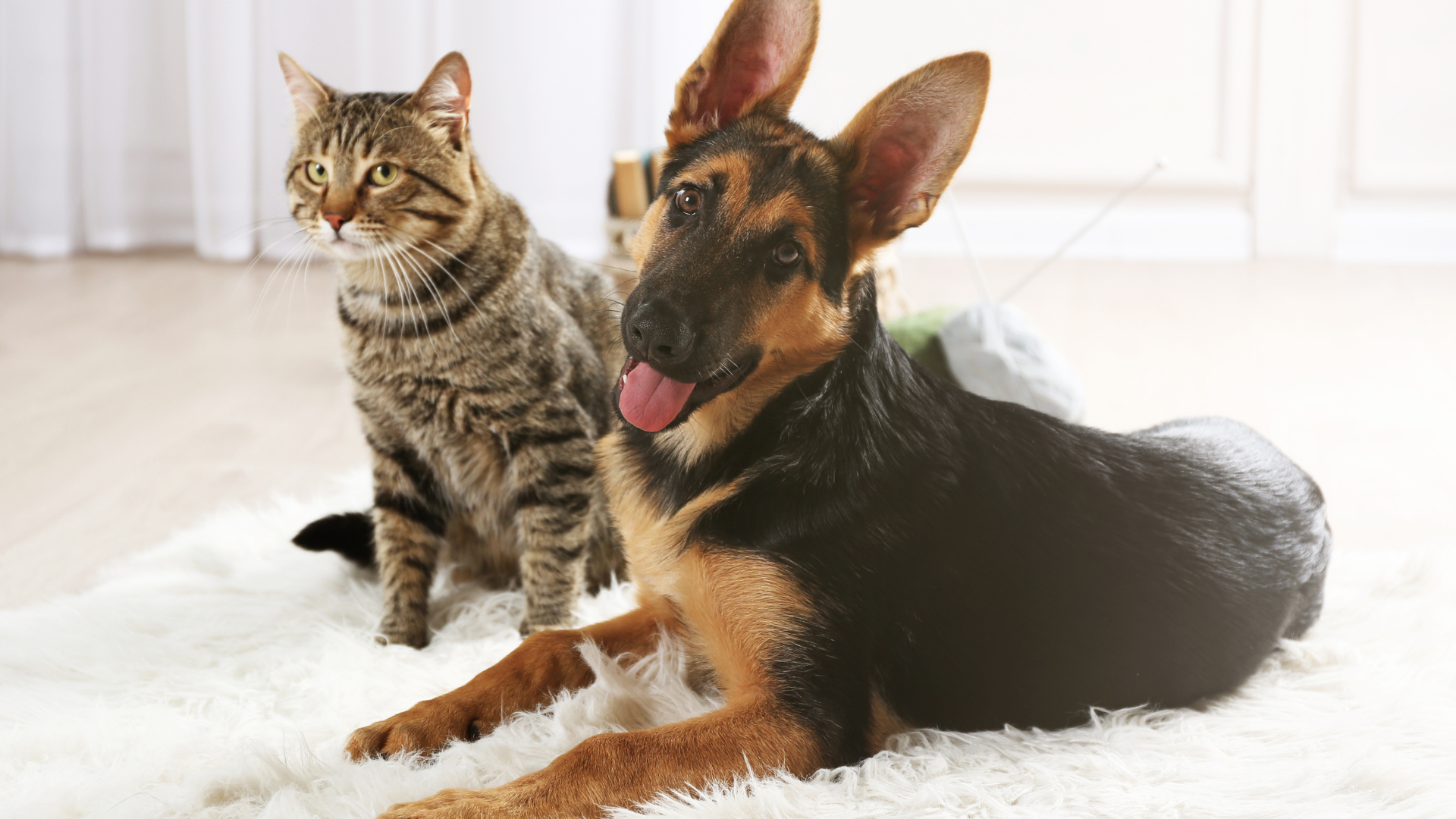You’ve barely stepped out of bed, and your furry shadow is already glued to your side. Whether you're brushing your teeth or trying to grab a moment of privacy in the bathroom, your dog is always right behind you. Sound familiar?
Many pet parents notice this behavior and wonder: Why is my dog so clingy? Is it love, anxiety, or just curiosity? If your pup follows you everywhere—including into the bathroom—you’re not alone. This seemingly quirky habit is deeply rooted in your dog’s instincts, emotions, and sometimes even health.
In this comprehensive guide, we’ll explore the psychology of clingy dogs, the most common reasons for their following behavior, and what it reveals about your dog’s loyalty. We'll also offer expert-backed strategies to manage this behavior, helping you create a more balanced and happy life for both you and your loyal companion.
Whether your pup is a certified “Velcro dog” or just overly curious, read on to uncover what’s really going on behind those loving eyes.
Understanding the Psychology Behind Following Behavior
Dogs are more than just adorable companions—they’re incredibly social creatures with complex emotional and cognitive needs. When your dog follows you everywhere, it’s not just a quirky habit; it often stems from instinctual behavior and deep-rooted psychology. Let’s explore why this following behavior is so natural—and common—in dogs.
Pack Mentality and Evolutionary Roots
Dogs are descendants of wolves, animals that thrive in packs. In the wild, sticking together meant safety, cooperation during hunts, and stronger survival chances. While your dog may not be chasing prey through the forest, that pack mentality is still very much alive.
In a domestic setting, you are your dog’s pack leader. Following you around is simply your dog’s way of staying close to their trusted leader. This behavior often becomes even more pronounced in breeds originally developed for companionship or working closely with humans—like Labrador Retrievers, Border Collies, or German Shepherds.
Unique Insight: Studies show that dogs have a neurochemical response similar to human bonding. When they see or interact with you, their brain releases oxytocin—the “love hormone”—which strengthens their desire to stay close to you.
Imprinting and Puppy Development
Much like ducklings imprint on the first moving thing they see, puppies form strong attachments during early socialization periods. If your dog was raised closely around humans, particularly during the first 12–16 weeks, they may imprint on people instead of other dogs.
This attachment continues into adulthood, especially if the puppy experienced loss, trauma, or limited interaction with littermates or other pets. The result? A loyal companion who doesn’t want to let you out of their sight.
Example: Rescue dogs often develop clingy behaviors because of disrupted early development or inconsistent caregiving. Following behavior in these cases is driven by a fear of being abandoned again.
Dogs as Social Creatures
Unlike cats, most dogs are naturally inclined to live and interact in groups. They don’t just tolerate company—they crave it. Being near you is their way of participating in your “social world.” Dogs observe human cues, mimic behaviors, and often synchronize their routines with their owners.
If your dog follows you into the kitchen, the bathroom, or even the garage, they’re saying, “I’m part of your team, right?”
Fun Fact: A 2015 study from the University of Tokyo found that dogs understand human pointing and gaze direction better than even chimpanzees, further emphasizing their deep social integration with humans.
What Makes Some Dogs Clingier Than Others?
Not all dogs follow their humans everywhere—so why do some seem to shadow your every move while others are perfectly content lounging on their own? The answer lies in a combination of genetics, upbringing, health, and individual personality. Understanding what contributes to clingy behavior can help you better support your pup while fostering a healthier bond.
Velcro Dogs: A Real Phenomenon
You may have heard the term "Velcro dog", referring to dogs that stick to their owners like glue. This isn’t just a cute nickname—it’s a recognized behavioral trait. Velcro dogs constantly want to be near their humans, often displaying signs of distress when separated, even momentarily.
Common Velcro Dog Traits Include:
-
Following you from room to room
-
Lying as close to you as physically possible
-
Becoming agitated when doors are closed
-
Frequently seeking eye contact and affection
While Velcro behavior can be a sign of a deep bond, it may also signal underlying anxiety or unmet emotional needs.
Breed Tendencies Toward Loyalty and Attachment
Some breeds are biologically and behaviorally wired to be more loyal, attentive, and people-focused. These dogs were often bred for close work with humans—herding livestock, guarding property, or providing companionship.
Breeds Known for Clinginess:
-
Labrador Retrievers
-
German Shepherds
-
Border Collies
-
Cavalier King Charles Spaniels
-
Italian Greyhounds
-
Vizslas
-
Chihuahuas
For example, Vizslas are famously known as the “Velcro breed” due to their unwavering desire to be near their humans. These breeds don’t just like being around you—they need it.
Unique Insight: Studies from the University of Lincoln in the UK have shown that dogs bred for work tend to have higher levels of human-directed behaviors compared to breeds developed for more independent tasks.
Personality Traits and Life Experience
Just like people, dogs have distinct personalities. Even within the same breed, one pup might be fiercely independent while another is constantly by your side. Personality traits like sensitivity, nervousness, curiosity, or sociability can all affect following behavior.
Additionally, past experiences shape behavior:
-
Rescue or shelter dogs may be more clingy due to previous trauma or instability.
-
Dogs with a single caregiver often form intense bonds and may rely heavily on that person for comfort and routine.
-
Overprotected or spoiled dogs may become dependent on their humans for entertainment, security, and decision-making.
Example: A dog adopted during the pandemic may have never learned how to be alone, making them more prone to clinginess as routines shift post-COVID.
10 Common Reasons Dogs Follow You Everywhere
If your dog’s paws are never far from your heels, it might feel like you’ve adopted a furry shadow. While it can be adorable, it also raises questions: Why is my dog doing this? Understanding the why behind your dog’s constant companionship can help you respond with empathy—and possibly make necessary adjustments to support their well-being.
1. Separation Anxiety
Dogs with separation anxiety often feel panicked when left alone, even briefly. They follow you constantly to avoid the distress they associate with your absence.
Signs include:
-
Pacing or whining when you’re not in sight
-
Destructive behavior when left alone
-
Over-the-top greetings when you return
Example: A rescue dog that was abandoned in the past might follow you obsessively out of fear you’ll leave again.
2. Boredom or Lack of Stimulation
A bored dog is a restless dog. If they’re not mentally or physically engaged, they’ll follow you just for something to do—or in hopes of finding fun.
Tip: Regular walks, enrichment toys, and games like hide-and-seek can redirect this energy into more productive outlets.
3. Seeking Attention or Affection
Sometimes the reason is simple: your dog loves you and wants your attention! If following you has earned them pets, treats, or conversation in the past, they’ve learned that sticking by your side = reward.
Insight: Dogs are excellent at identifying patterns. If every trip to the kitchen includes a snack for them, guess where they’ll always be?
4. Reinforced Behavior (You Encourage It!)
Even without realizing it, many pet parents reward clingy behavior. Reassuring your pup every time they follow you, or giving them treats when they’re underfoot, reinforces the cycle.
Try this: Reward calm independence instead—like when your dog lies on their bed quietly instead of tailing you.
5. Hunger or Expecting Treats
Does your dog seem especially glued to your side around breakfast or dinner time? They might just be using their internal clock (and nose!) to remind you that food time is near.
Related Behavior: Dogs can learn that certain sounds—like opening a cabinet or rustling a bag—mean treats are coming.
6. Curiosity About Your Actions
Dogs are naturally curious, and you’re the most interesting thing in their world. If you move, they want to know why. This is especially true in households where routines constantly change or new people, sounds, or smells are introduced.
7. Fear or Insecurity
Loud noises, guests, or unfamiliar environments can make your dog anxious—and they’ll turn to you for reassurance. Following you helps them feel safe and grounded.
Tip: Provide a safe zone (like a crate or corner bed) where your dog can retreat and feel secure when stressed.
8. Age-Related Cognitive Decline
Older dogs may follow their owners more due to Canine Cognitive Dysfunction (CCD), similar to dementia in humans. They may feel confused and look to you for direction or comfort.
Signs include:
-
Disorientation
-
Increased anxiety
-
Changes in sleep/wake cycles
Stat: Nearly 1 in 3 senior dogs over age 11 shows at least one sign of cognitive decline, according to a 2020 study in Scientific Reports.
9. Health Issues (Vision, Hearing, Pain)
If your dog is suddenly more clingy, it may be due to a physical ailment. They might be seeking help or just trying to stay close to the person who makes them feel safest.
Veterinary Tip: Sudden clinginess with no other behavioral explanation should prompt a vet visit—especially in older dogs.
10. Routine and Habitual Patterns
Dogs are creatures of habit. If following you around has become part of their daily rhythm, they’ll continue doing it unless encouraged otherwise.
Example: If your dog is used to walking with you when you check the mail or take a shower, they may think it’s part of the routine—even if they’re not invited.
Why the Bathroom? A Funny Yet Fascinating Habit
It’s one of the most relatable moments for any dog owner—you head to the bathroom, and your pup insists on coming along. No closed doors. No alone time. But why are dogs so fixated on following us specifically into the bathroom?
Though it seems humorous, this behavior is rooted in psychology, pack instincts, and even environmental curiosity. Let’s unpack it.
Unfamiliar Smells & Sounds
Dogs experience the world through their senses—especially smell. Bathrooms are filled with interesting, pungent, and constantly changing scents: soaps, sprays, lotions, and yes, bodily functions. While these might make us wrinkle our noses, to a dog, it’s like an olfactory amusement park.
Fun Fact: Dogs have up to 300 million scent receptors (humans have about 5 million). They may follow you in just to investigate new smells or “supervise” your activities.
They’re also curious about the sounds: flushing toilets, running water, squeaky doors. These unexpected noises might make them feel like they need to be nearby, just in case.
No Pack Member Left Behind Instinct
Dogs are hardwired to stick with their pack—and in the wild, that would mean traveling, resting, and even relieving themselves together for safety. When you disappear behind a closed door, your dog might interpret it as: “Why are you leaving the pack?”
Unique Insight: Your dog may not understand the concept of privacy, but they do understand separation. A closed bathroom door breaks their sense of togetherness—and they don’t like it.
Some dogs will scratch, bark, or whine outside the door, not because they’re misbehaving, but because the idea of being away from you, even briefly, makes them uncomfortable.
Reinforced Behavior Through Your Reactions
Think about how you respond when your dog follows you into the bathroom:
-
You talk to them
-
You pet them while you're on the toilet
-
You laugh and take a photo
All of these are forms of positive reinforcement. Over time, your dog learns that the bathroom is not only a place they’re allowed to go, but a place where they’ll get attention.
Example: A dog that once accidentally walked into the bathroom and was met with affection will likely repeat that behavior again…and again.
Is This Normal or a Sign of a Problem?
Having your dog follow you around can be adorable—until it becomes overwhelming or problematic. So how can you tell if your dog’s clingy behavior is just a sign of love and loyalty, or a symptom of a deeper issue, like anxiety, fear, or illness?
Let’s explore how to recognize the difference.
When Clinginess Is Healthy
Not all clingy behavior is cause for concern. In fact, for many dogs, following their human is a sign of strong bonding. Some dogs simply prefer to be close, and as long as they’re emotionally stable and can be left alone without panic, it’s perfectly normal.
Examples of healthy clinginess:
-
Your dog follows you from room to room but can settle down quickly
-
They’re relaxed when alone or left in a crate
-
Their behavior is consistent and doesn't escalate in intensity
-
They don’t show signs of stress when you leave the house
Insight: Puppies, senior dogs, and certain breeds may naturally exhibit more attachment without it signaling a problem.
Warning Signs of Anxiety or OCD
If your dog’s attachment becomes extreme, it could point to separation anxiety or even a canine form of obsessive-compulsive disorder (OCD). Dogs with anxiety may panic when left alone, destroy furniture, bark excessively, or even harm themselves.
Red flags include:
-
Pacing, whining, or drooling when you’re out of sight
-
Destructive behavior only when left alone
-
Trying to break out of crates or jump through windows
-
Excessive grooming or repetitive movements
Example: A dog who won’t eat, sleep, or play when you're not home may be experiencing distress beyond normal attachment.
When to See a Veterinarian or Behaviorist
Sudden changes in behavior—like a normally independent dog becoming clingy—should always prompt a check-up with your vet. Underlying medical issues such as thyroid disorders, sensory loss, or pain can cause your dog to seek more closeness and reassurance.
If your vet rules out medical problems, a certified canine behaviorist can help evaluate whether your dog’s behavior stems from emotional or behavioral issues, and recommend appropriate training or therapy.
Pro Tip: Keep a behavior journal for a week—note when the following behavior happens, what triggered it, and how your dog responds when left alone. This helps professionals spot patterns more easily.
How to Manage an Overly Clingy Dog
If your dog’s constant companionship has crossed the line from cute to clingy, you’re not alone. Many pet parents face the challenge of balancing a loving bond with the need for personal space. The good news? With some patience, training, and consistency, you can help your pup feel more secure and independent—without damaging your relationship.
Enrichment and Independent Play
One of the most effective ways to reduce clinginess is to keep your dog mentally and physically stimulated throughout the day. A tired brain (and body) is less likely to obsess over your every move.
Ideas to promote independence:
-
Puzzle toys like the Kong Wobbler or Outward Hound’s Tornado
-
Hide-and-seek games using treats
-
Frozen peanut butter or broth-filled toys during your alone time
-
Interactive toys that make noise or dispense treats
These tools help your dog build confidence through solo play, reinforcing the idea that they don’t need to be next to you 24/7 to feel content.
Gradual Desensitization Techniques
If your dog experiences distress when you leave the room or house, try desensitization—a slow and steady method to build tolerance.
Try this basic routine:
-
Walk out of the room for 10 seconds.
-
Return and calmly ignore your dog for a moment.
-
Gradually increase the time you’re gone each day.
This technique works best when combined with counterconditioning, such as giving your dog a treat-filled toy only when you leave, to create a positive association.
Unique Insight: Studies have shown that dogs who are taught to “tolerate absence” in small doses are less likely to develop full-blown separation anxiety.
Crate Training and Safe Spaces
Creating a designated safe zone can help your dog feel secure without being physically near you. This could be a crate, a cozy dog bed in a quiet room, or a gated area with toys and calming scents.
Important: The safe space should never be used for punishment. It should always feel like a retreat, not a time-out zone.
For extra soothing, consider using:
-
Calming music
-
Lavender-scented sprays made for dogs
-
A shirt that smells like you
Consistent Routines and Boundaries
Dogs thrive on predictability. If your dog knows you always return after a bathroom break or workday, their anxiety will decrease over time. Establish regular routines around:
-
Walks and feeding
-
Alone time (even just short breaks)
-
Training and play sessions
Pro Tip: Use commands like “stay” or “place” to give your dog structured independence. Reinforce these with praise and treats when they remain in place without following you.
Training Tips to Encourage Independence
Training your dog to feel secure and confident when you're not around is one of the most effective ways to reduce clingy behavior. The goal isn’t to push your dog away but to gently teach them that being alone is safe, rewarding, and normal. Here’s how to do that—step by step.
“Stay” and “Place” Commands
Teaching your dog to stay or remain in a designated area can help build independence and reduce their urge to follow you from room to room.
Training Tip:
-
Start by choosing a “place”—like a mat, bed, or blanket.
-
Use treats to lure your dog to the spot and say “place.”
-
Once they stay there, reward them and gradually increase the distance and duration before rewarding.
Over time, your dog will learn that being in their place—even when you’re out of sight—is a good thing.
Real-Life Example: One pet parent reported that teaching their dog to stay on a yoga mat while they showered helped eliminate bathroom-following within a week.
Clicker Training for Distance
Clicker training is a powerful tool for marking good behavior. It works especially well for reinforcing calm, independent actions like staying in another room, playing solo, or not reacting when you walk away.
How to use it:
-
Click the moment your dog chooses to lie down or relax away from you.
-
Follow with a treat.
-
Repeat until your dog starts offering that behavior more often.
Eventually, they’ll associate being calm and independent with positive rewards.
Pro Insight: Research from the Journal of Veterinary Behavior shows that dogs trained using clicker techniques show faster learning and higher confidence levels.
Controlled Alone Time Practice
Creating structured opportunities for your dog to be alone—even if you're still nearby—is critical.
Start Small:
-
Close a baby gate between you and your dog for just 1–2 minutes.
-
Leave the room with a high-value treat or toy for them to enjoy.
-
Gradually increase time and reduce your involvement.
Goal: Your dog learns that alone time is both normal and rewarding.
Use of Verbal Cues and Calm Departures
Always stay neutral and low-energy when leaving or returning home. Over-the-top greetings or long goodbyes can heighten anxiety.
Instead:
-
Use simple verbal cues like “I’ll be back” to signal departure.
-
Ignore overexcited behavior when you return.
-
Reward calmness after separation—not clinginess.
This trains your dog to associate your absence with predictability and calmness.
Clingy Behavior in Puppies vs. Adult Dogs
Clinginess can look different depending on your dog’s age and stage of development. A puppy that follows you around is not the same as a senior dog who suddenly becomes overly attached. Understanding the differences can help you respond with the right approach—whether it’s training, reassurance, or a vet visit.
Normal Puppy Attachment
Puppies are naturally dependent on their caregivers—especially in the first few months of life. Their world is unfamiliar and they look to you for food, safety, and social cues.
Common puppy clinginess behaviors:
-
Constant shadowing during the day
-
Whining when out of sight
-
Sleeping near or on top of you
Puppy clinginess is developmentally appropriate and usually fades with maturity, training, and socialization.
How to support them:
-
Begin crate training early
-
Encourage short periods of alone time
-
Introduce them to new people, pets, and places
Pro Tip: Gradual exposure builds confidence and helps prevent future separation anxiety.
Red Flags in Adult Dogs
In adult dogs, excessive clinginess can signal unmet needs or underlying anxiety. While some dogs maintain a strong bond into adulthood, it becomes concerning when:
-
They can’t settle when alone
-
They show destructive or compulsive behaviors
-
They become distressed even during short separations
Example: An adult dog who was previously independent but starts whining and pacing when left alone may be experiencing a behavioral shift triggered by a routine change, trauma, or health issue.
What to do:
-
Reassess their routine and stimulation levels
-
Provide more structure and mental enrichment
-
Consult a vet or trainer if the behavior escalates
Special Considerations for Senior Dogs
Older dogs may become more attached due to age-related changes, such as:
-
Cognitive dysfunction (doggy dementia)
-
Hearing or vision loss
-
Arthritis or chronic pain
These physical and neurological shifts can make them feel vulnerable or disoriented, prompting them to seek out your presence for comfort and reassurance.
Insight: If your senior dog suddenly starts following you everywhere, it may be their way of coping with confusion or fear.
What helps:
-
Stick to predictable routines
-
Keep their environment consistent
-
Use night lights and soft background noise to reduce anxiety
Veterinary Tip: Always check for underlying health issues if your dog’s behavior changes suddenly in old age.
Medical Causes of Clingy Behavior
While it’s easy to assume that clingy behavior is purely emotional or behavioral, sometimes it’s your dog’s way of signaling discomfort or illness. Sudden or increasing attachment—especially in previously independent dogs—can be a red flag for underlying health issues.
Let’s explore the most common medical reasons your dog might suddenly be glued to your side.
Cognitive Dysfunction Syndrome (Dog Dementia)
As dogs age, they can develop Canine Cognitive Dysfunction (CCD)—a condition similar to Alzheimer’s in humans. It affects memory, awareness, and behavior, often causing dogs to become disoriented or anxious.
Symptoms include:
-
Pacing or restlessness
-
Getting “stuck” in corners or behind furniture
-
Reversed sleep cycles (awake at night, sleeping during the day)
-
Increased clinginess or confusion when alone
Insight: Clingy behavior may be a coping mechanism. Your presence helps orient and calm them in a world that’s becoming unfamiliar.
What to do:
-
Visit your vet to confirm diagnosis
-
Add brain-boosting supplements or prescription medications
-
Maintain consistent routines and surroundings
Pain, Discomfort, or Sensory Decline
When a dog isn’t feeling well, they often become more clingy and dependent. Unlike humans, dogs can’t verbally communicate pain—so they rely on behavior changes to signal distress.
Possible causes:
-
Arthritis or joint pain
-
Dental pain
-
Ear infections or skin irritations
-
Gastrointestinal issues
-
Loss of hearing or vision
Example: A dog with arthritis may follow you around not out of affection, but because they want help getting comfortable or need reassurance.
What to watch for:
-
Limping or reluctance to jump
-
Excessive licking of a specific area
-
Sensitivity to touch
-
Flinching or confusion in new spaces (vision/hearing loss)
Pro Tip: Sudden clinginess in a normally aloof dog is one of the most commonly overlooked symptoms of pain or illness.
Recent Illness, Trauma, or Surgery
If your dog has recently gone through a medical event—like surgery, an accident, or a prolonged illness—they may feel physically and emotionally fragile. This can lead to temporary but intense clinginess, as they rely on you to feel safe during recovery.
Supportive tips:
-
Offer comfort, but stick to routines
-
Give them a designated healing space
-
Avoid coddling to prevent long-term dependence
Veterinary Insight: Post-surgery clinginess often fades once your dog feels better. However, continued dependency should be addressed with light training and positive reinforcement.
How Dog Loyalty Manifests in Behavior
Dogs are often described as the most loyal animals on Earth—and for good reason. They form deep emotional connections with their humans, often demonstrating unwavering devotion, trust, and protectiveness. But what does loyalty actually look like, and how does it relate to clingy behavior?
Let’s break down the fine line between loyalty and dependency—and how to foster a bond that’s both strong and healthy.
Loyalty vs. Anxiety: The Key Differences
It’s important to distinguish between a loyal dog and an anxious one. While both may follow you everywhere, their motivations and emotional states are very different.
|
Loyal Dog Behavior |
Anxious/Dependent Dog Behavior |
|
Follows but relaxes nearby |
Paces or whines when separated |
|
Can be left alone calmly |
Panics when you're out of sight |
|
Shows excitement—but not distress—on return |
Overreacts or cries when reunited |
|
Independent play is possible |
Constant need for reassurance |
Unique Insight: Loyalty is about connection and trust. Anxiety is rooted in fear and insecurity.
Examples from Real-Life Pet Parents
Many dog owners report behaviors like:
-
Sitting by the door until you return
-
Lying beside your bed at night
-
Bringing you toys or “gifts” throughout the day
-
Checking on you when you move from room to room
These are classic signs of healthy loyalty—especially when not accompanied by distress.
Example: One pet parent shared that their dog waits patiently outside the bathroom door without whining or scratching, simply content to be nearby. This shows loyalty without anxiety.
Building a Healthy Loyal Bond
You can encourage loyal behavior while reducing unhealthy clinginess by:
-
Spending quality time together (walks, training, cuddles)
-
Respecting boundaries (encouraging alone time and play)
-
Providing structure (dogs thrive on routine and predictability)
-
Reinforcing calm behavior (rewarding independence and relaxed behavior)
Pro Tip: Loyalty is best nurtured through positive interactions, clear communication, and mutual trust—not constant contact.
When Clinginess Turns Into Separation Anxiety
For some dogs, what starts as affectionate attachment gradually evolves into something more intense and distressing: separation anxiety. This condition affects a surprising number of pets and is more than just a little whining when you leave the house—it’s a deep-rooted fear of being left alone.
Understanding the signs and knowing how to help can make a huge difference in your dog’s emotional well-being—and your peace of mind.
Symptoms and Diagnosis
Separation anxiety goes beyond typical clingy behavior. It can be debilitating for dogs, causing emotional and physical distress every time their person is out of sight.
Common symptoms include:
-
Destructive behavior (chewing furniture, scratching doors)
-
Excessive barking, whining, or howling
-
Accidents in the house despite being house-trained
-
Pacing, panting, or drooling excessively when alone
-
Attempts to escape (digging at doors, jumping through windows)
Insight: These behaviors typically begin within minutes of your departure and stop once you return—unlike boredom-driven destruction, which is more sporadic.
Vet Perspective: According to the ASPCA, up to 20–40% of dogs referred to behavior clinics are diagnosed with separation anxiety.
Treatment and Lifestyle Changes
Treating separation anxiety takes time, consistency, and compassion. The goal is to help your dog feel safe and confident in your absence, not just tolerate it.
Steps to help ease separation anxiety:
-
Desensitize your dog to departure cues:
-
Pick up your keys or put on your shoes without leaving to reduce anxiety associated with those triggers.
-
Create positive associations with alone time:
-
Use high-value treats or toys (like frozen peanut butter KONGs) only when you leave.
-
Gradual alone-time training:
-
Start with short separations and slowly build up the time.
-
Reward calm behavior when you return, and avoid dramatic entrances.
-
Avoid punishment:
-
Scolding your dog after anxious behavior only reinforces fear and insecurity.
-
Use calming tools:
-
Try anxiety wraps (like the ThunderShirt), pheromone diffusers, or calming music.
-
Exercise and stimulation:
-
Tire your dog out physically and mentally before leaving them alone.
Unique Insight: Many dogs with separation anxiety benefit from structured independence exercises, like learning to settle on a mat or stay in another room while you’re home.
When to Seek Professional Help
If your dog’s anxiety is severe or unresponsive to basic training:
-
Consult a veterinary behaviorist who may recommend therapy or anxiety-reducing medications.
-
A certified dog trainer can provide tailored desensitization plans and behavior modification programs.
Pro Tip: In extreme cases, your vet may prescribe temporary anti-anxiety medications as part of a comprehensive treatment plan—not as a long-term solution, but a stepping stone.
Tools and Toys That Help Reduce Clinginess
If your dog struggles with clinginess—or more severe separation anxiety—there are practical tools, toys, and calming aids that can make a big difference. These resources help your pup stay occupied, stimulated, and comforted when you’re not nearby, making alone time more manageable (and even enjoyable!).
Puzzle Toys and Dispensers
Mental stimulation is a key ingredient in reducing clingy behavior. Dogs that are busy solving puzzles or working for their food are less likely to stress over your absence.
Top picks for enrichment:
-
KONG Classic: Fill it with peanut butter, wet food, or treats and freeze it for longer engagement.
-
Outward Hound Tornado Puzzle: Great for food-motivated dogs who love to "figure things out."
-
Snuffle Mats: Mimics natural foraging and encourages dogs to use their noses to hunt for kibble.
Tip: Reserve these toys only for when you're away or practicing alone-time exercises. This creates a positive association with separation.
Interactive Cameras or Pet Monitors
Modern technology allows you to check in on your pup while you're away—and even interact with them.
Popular options:
-
Furbo Dog Camera: Offers 2-way audio, treat tossing, and alerts when your dog barks or moves.
-
Petcube Bites 2: Another smart treat-dispenser with HD video and night vision.
These tools can help ease your anxiety too—offering reassurance that your pup is doing just fine.
Insight: Some dogs are calmed by hearing your voice through a pet camera; others may get confused. Test reactions carefully before relying on this feature.
Calming Aids and Products
If your dog is prone to anxiety or stress, you can support their emotional health with natural calming solutions. These work well alongside training—not as a substitute.
Calming tools to try:
-
Adaptil Diffuser or Collar: Mimics a mother dog’s calming pheromones.
-
CBD Dog Treats (vet-approved): May reduce anxiety in some dogs.
-
Thundershirt: A snug wrap that applies gentle, calming pressure.
-
LickiMat: Soothes through repetitive licking, releasing calming endorphins.
Note: Always consult your veterinarian before introducing new supplements or products.
Expert Insights: What Veterinarians and Behaviorists Say
To round out our understanding of clingy dog behavior, let’s look at what the professionals have to say. Veterinarians, dog behaviorists, and animal psychologists have studied the nuances of following behavior, loyalty, and separation anxiety for years—and their insights can help you make informed decisions for your pup.
Quotes from Experts on Clingy Dogs
“Dogs are social animals and naturally want to be with their family, but when following behavior escalates into anxiety or panic, it’s time to intervene.”
– Dr. Jennifer Coates, DVM, PetMD Contributor
“Velcro dog behavior is cute until it turns into a dependency that affects the dog’s quality of life. We aim to teach the dog how to feel safe when their human isn’t around.”
– Victoria Stilwell, Renowned Dog Trainer & Behavior Expert
“Clinginess can be emotionally motivated, medically triggered, or a sign of poor early development. You have to rule out health concerns before starting any behavioral plan.”
– Dr. Wailani Sung, Veterinary Behaviorist
Scientific Findings on Dog-Human Bonding
Numerous studies have explored the unique emotional connection between dogs and humans—and how this bond sometimes leads to excessive attachment.
Noteworthy Research:
-
A 2015 study published in Science revealed that both dogs and humans release oxytocin (the bonding hormone) when gazing into each other’s eyes—similar to the bond between mother and infant.
-
Research from The Journal of Veterinary Behavior highlights that dogs with separation anxiety exhibit brain activity associated with panic disorders in humans.
Insight: The same hormones that make your dog love and trust you can also make them need you—sometimes more than is emotionally healthy.
Professional Tips for Pet Parents
Veterinarians and trainers recommend a multi-faceted approach when managing clinginess:
-
Medical check-up first – Always rule out pain or illness.
-
Set boundaries early – Especially during puppyhood or after adoption.
-
Use force-free training – Avoid punishment; it only deepens insecurity.
-
Celebrate independence – Reward your dog for calm, confident behavior when alone.
Pro Tip: Schedule a “solo time” session daily where your dog engages in an enriching activity on their own—this builds resilience and trust.
Quick Takeaways
Here’s a bite-sized summary of the key points we’ve covered throughout this comprehensive guide on clingy dogs and their following behavior:
-
Following behavior is natural for dogs due to their pack instincts and social nature—but excessive clinginess may signal anxiety or health issues.
-
Velcro dogs are more common in certain breeds and personalities, especially those bred for companionship or close work with humans.
-
Dogs follow you to the bathroom out of curiosity, routine, and loyalty—not because they understand human privacy.
-
Red flags for unhealthy attachment include destruction, vocalization, or distress when left alone—potential signs of separation anxiety.
-
Medical issues like cognitive decline or pain can also lead to increased clinginess, especially in senior dogs.
-
Managing clinginess involves enrichment, training, gradual independence exercises, and consistent routines.
-
Tools and toys like puzzle feeders, calming aids, and interactive cameras can support alone-time training and reduce stress.
-
Veterinarians and behaviorists recommend addressing medical concerns first, then using force-free training to build emotional resilience.
Conclusion
Clingy dog behavior can be equal parts endearing and exhausting. If your pup follows you into every room—including the bathroom—they may be showing affection, loyalty, curiosity, or even anxiety. While this behavior is often rooted in a healthy bond, it’s important to understand when it crosses into dependency or distress.
By learning to identify the cause—whether it’s puppy development, breed tendencies, anxiety, or health issues—you can better support your dog’s emotional well-being. Encouraging independence through training, structure, and enrichment helps your dog feel safe when alone, which ultimately strengthens your bond.
Remember: it’s not about pushing your dog away—it’s about building a confident, happy pup who loves you and can thrive with or without you in the room.
If you’re struggling with your dog’s clinginess or suspect separation anxiety, don’t hesitate to consult a veterinarian or certified dog behaviorist. Your dog deserves a life that’s emotionally balanced—and so do you.
FAQs
1. Why does my dog follow me into the bathroom?
Dogs are curious, social animals. They’re interested in the sounds, smells, and routines of the bathroom—and they don’t understand the concept of privacy. Following you in is simply their way of staying connected.
2. Is it okay to let my dog follow me everywhere?
Occasional following is normal and harmless. But if your dog seems distressed when separated or can’t function without you nearby, it may be a sign of separation anxiety and should be addressed.
3. How can I help my dog become more independent?
Start with enrichment activities, “stay” and “place” training, and structured alone time. Reward calm, independent behavior to reinforce confidence and reduce the urge to constantly follow you.
4. Can clinginess be caused by health problems?
Yes—especially in senior dogs. Cognitive dysfunction, pain, or sensory loss can all lead to increased attachment and following behavior. A vet check is recommended for sudden behavioral changes.
5. What breeds are most likely to be Velcro dogs?
Breeds like Labrador Retrievers, Border Collies, Vizslas, and Chihuahuas are known for their strong loyalty and desire to stay close to their humans, often becoming “Velcro dogs.”
We Want to Hear From You!
Does your dog follow you everywhere—even into the bathroom?
Share your story in the comments below! 🐾
What's the funniest or most surprising place your dog has followed you to?
Your experience might help another pet parent going through the same thing!
Don’t forget to share this article with your fellow dog lovers!










